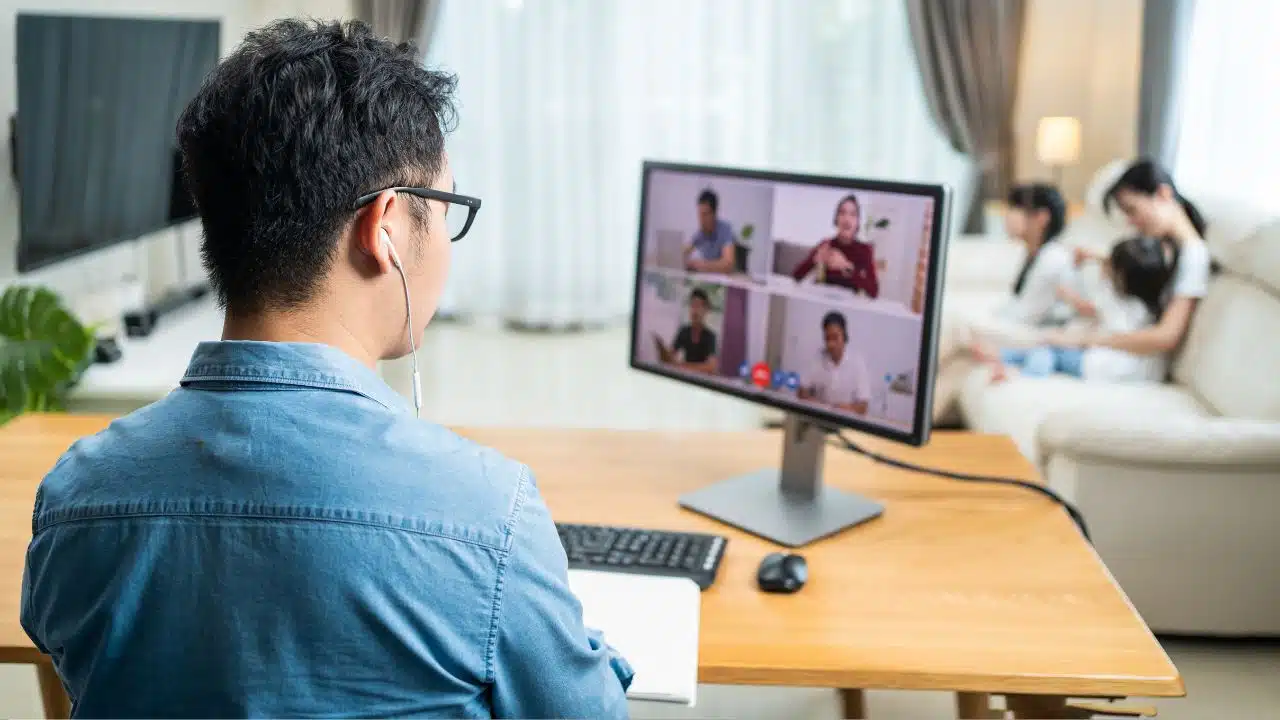Does your home office suck? Working from home is a great way to make money. But not all home offices are created equal. You could be less efficient with the wrong office setup and even damage your health.
While some provide a productive and comfortable work environment, others can be far from ideal, leading to decreased efficiency, motivation, and overall job satisfaction.
In this article, we’ll explore six telltale signs that your home office may not be up to par and offer solutions to transform it into a space that fosters productivity and well-being.
1. It’s Just Uncomfortable
One of the most common issues plaguing home offices is poor ergonomics of your office’s layout. If your workspace consists of a makeshift desk, a kitchen chair, or even your bed, you’re likely setting yourself up for discomfort and long-term health problems.
Signs of inadequate ergonomics include backaches, neck pain, wrist strain, and eye fatigue.
Solution
Make sure your home office is a dedicated home office. Use a proper ergonomic chair and an adjustable desk to create a comfortable and healthy workspace. Ensure your monitor is at eye level, your keyboard and mouse are comfortable, and your feet are supported with a footrest if necessary. Don’t forget to take regular breaks to stretch and avoid sitting for extended periods.
2. You Can’t Find Anything
A cluttered and disorganized workspace can significantly impact your productivity and mental clarity. When your home office is overrun with papers, cables, and miscellaneous items, it’s challenging to focus on your tasks and find what you need when you need it. You need to be able to find the things you need without spending a half hour looking for them.
Solution
Declutter your workspace by sorting and organizing your belongings. Invest in storage solutions such as bins, shelves, cabinets, and drawer organizers to keep things tidy. Create designated spaces for specific items, and tidy up your workspace at the end of each workday to start fresh the next morning.
3. Poor Lighting
Insufficient or harsh lighting can make your home office an uncomfortable place to work. Dim lighting can strain your eyes, while excessive brightness can cause glare and discomfort.
Solution
Optimize your lighting by placing your desk near a window for natural light or investing in adjustable task lighting. Consider using warm, soft-white LED bulbs to reduce eye strain. Position your lighting sources to minimize shadows and glare on your computer screen.
4. You’re Constantly Distracted
One of the biggest challenges of working from home is dealing with distractions. If your home office is located in a high-traffic area, near noisy appliances, or lacks proper sound insulation, you’ll find it challenging to maintain focus and productivity. This is the problem with a home office that isn’t a dedicated home office (we talked about this earlier in the article).
Solution
Identify and eliminate distractions by setting clear boundaries with family members or housemates. Use noise-canceling headphones or a white noise machine to block out external sounds. Create a dedicated, quiet workspace away from common living areas to minimize interruptions.
5. Boring Decorations
A bland or uninspiring workspace can lead to a lack of motivation and creativity. If your home office lacks personal touches or stimulating decor, you may find staying engaged with your work difficult.
Solution
Personalize your home office with decor that inspires and energizes you. Consider adding artwork, plants, or motivational quotes to your workspace. Choose colors and materials that resonate with you and promote a positive work environment. A well-designed and visually appealing office can boost your mood and productivity.
6. Inadequate Technology
Outdated or unreliable technology can be a significant roadblock to productivity in your home office. Slow internet connections, malfunctioning hardware, and outdated software can cause frustration and delays in your work.
Solution
Invest in reliable and up-to-date technology that supports your work needs. Upgrade your computer, invest in a high-speed internet connection, and ensure your software and apps are current. Consider using cloud-based solutions for storage and collaboration to streamline your workflow. Remember that your home office can be deducted as a business expense in the United States and other countries.
Set Up Your Home Office for Success
Your home office is crucial to your overall work experience, affecting productivity, comfort, and well-being. If you’ve noticed any of the telltale signs mentioned above in your workspace, it’s time to take action. By addressing these issues and implementing the suggested solutions, you can transform your home office from a place of frustration into a haven of productivity and creativity.
Remember that a well-designed home office doesn’t have to break the bank. With thoughtful planning and some strategic investments, you can create a workspace that supports your work and enhances your overall quality of life.
Prioritize your physical and mental well-being by creating a home office that doesn’t suck but rather empowers you to thrive in your remote work environment.
This article originally appeared on Wealth of Geeks and has been republished with permission.
Related Work From Home Articles:
- 20+ Work-From-Home Jobs You Can Start Today Without Spending a Dime!
- Are You Suffering From Work From Home Burnout? Banish It for Good!
Steve Adcock
Steve Adcock is an early retiree who writes about mental toughness, financial independence and how to get the most out of your life and career. As a regular contributor to The Ladders, CBS MarketWatch and CNBC, Adcock maintains a rare and exclusive voice as a career expert, consistently offering actionable counseling to thousands of readers who want to level-up their lives, careers, and freedom. Adcock's main areas of coverage include money, personal finance, lifestyle, and digital nomad advice. Steve lives in a 100% off-grid solar home in the middle of the Arizona desert and writes on his own website at SteveAdcock.us.
